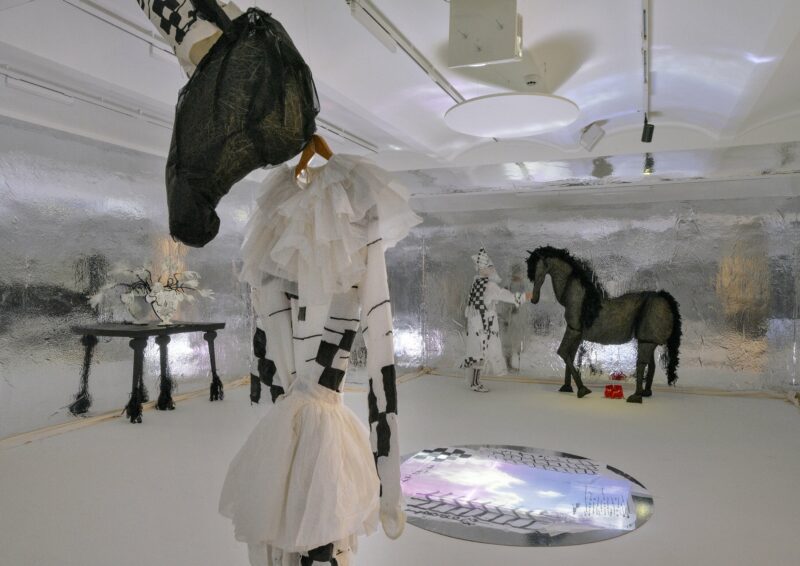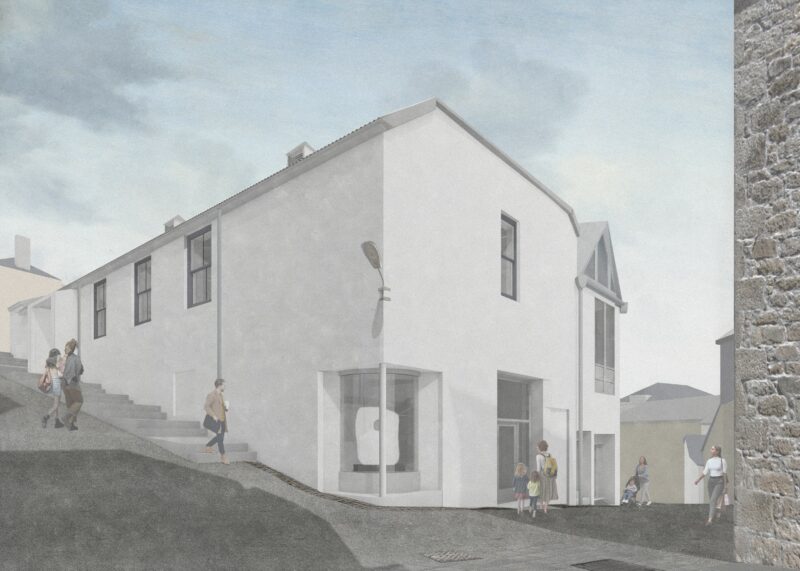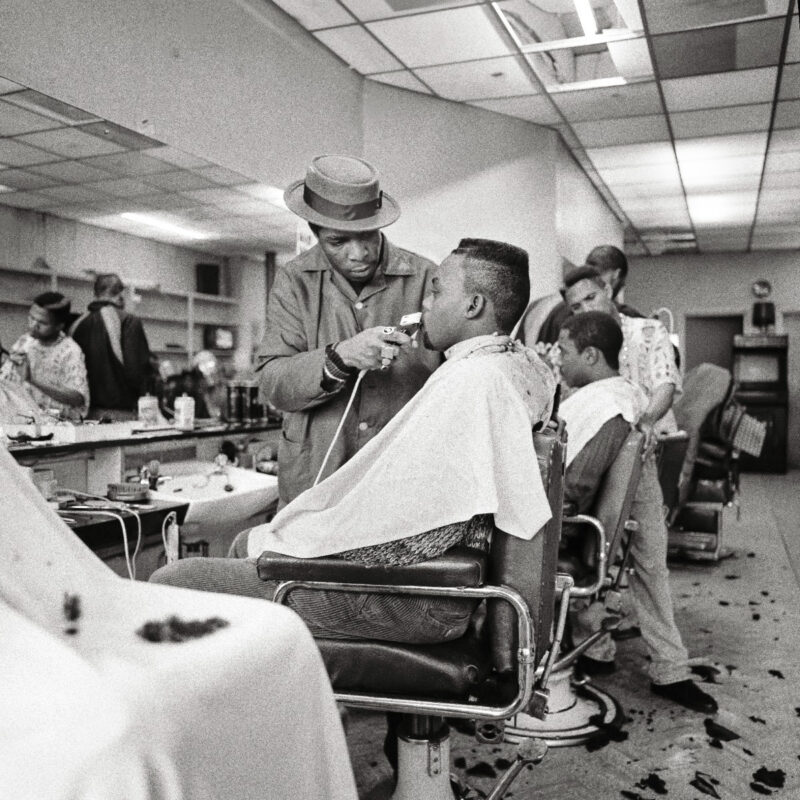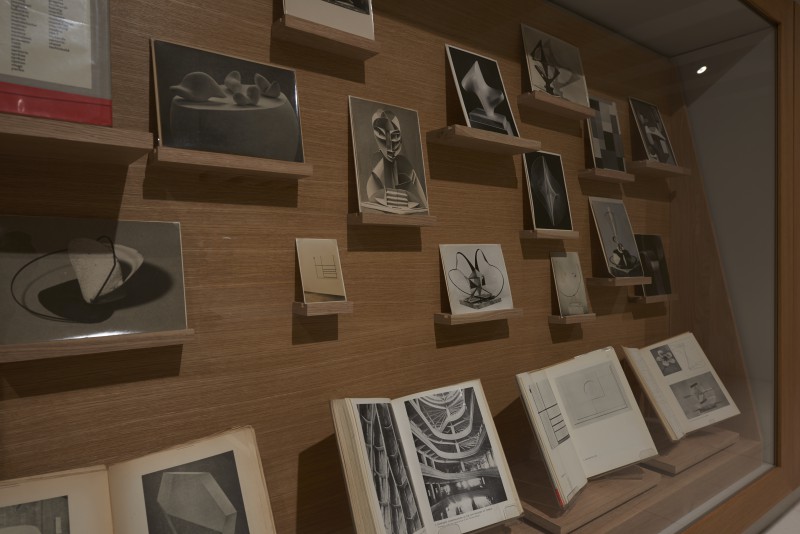
Charlotte Moth: ‘Inserts’ 2015, ten tailor-made structures fitted inside permanent wall mounted vitrines showing selected archival material about Hepworth (photo Sylvian Deleu)
Don’t miss the best Barbara Hepworth room at Tate Britain Why might you? Well, it isn’t in the ‘Barbara Hepworth’ exhibition. The retrospective (to 25 October) is an acceptable if somewhat plodding presentation of Hepworth’s career with most of the sculptures undermined by their presentation not just indoors (as was inevitable) and without natural light (avoidable) but enclosed in Perspex boxes, often with curiously prominent measurement devices to make sure the conditions are right. Step out and walk a few yards to the Tate’s Archive Gallery, however, and it’s a different story. The Paris-based British artist Charlotte’s Moth’s display ‘Choreography of the Image’ focuses on how Hepworth produced and herself chose to present her work. Ten elegant vitrines, each with a handy text, present photographs and ephemera in a suitably sculptural manner. They’re accompanied by a nicely pitched short film showing ‘the staging of the sculptural object before the camera as an extension of the eye’ in relevant locations, including the Cornish coast and Hepworth’s studio. In the vitrines we see, for example, Hepworth’s predilection for collaging her work against cloudscapes or photographing them with vegetation; the comprehensive planning which preceded filming the sculpture in 1961; her own photographs of works by Nuam Gabo on a windowsill; her proposals for public commissions and the ensuing correspondence; and an interesting diversion into the work of Simon Nicholson, one of Barbara’s triplets with Ben. Moth brings us closer to Hepworth than the main show and with not a Perspex box in sight.
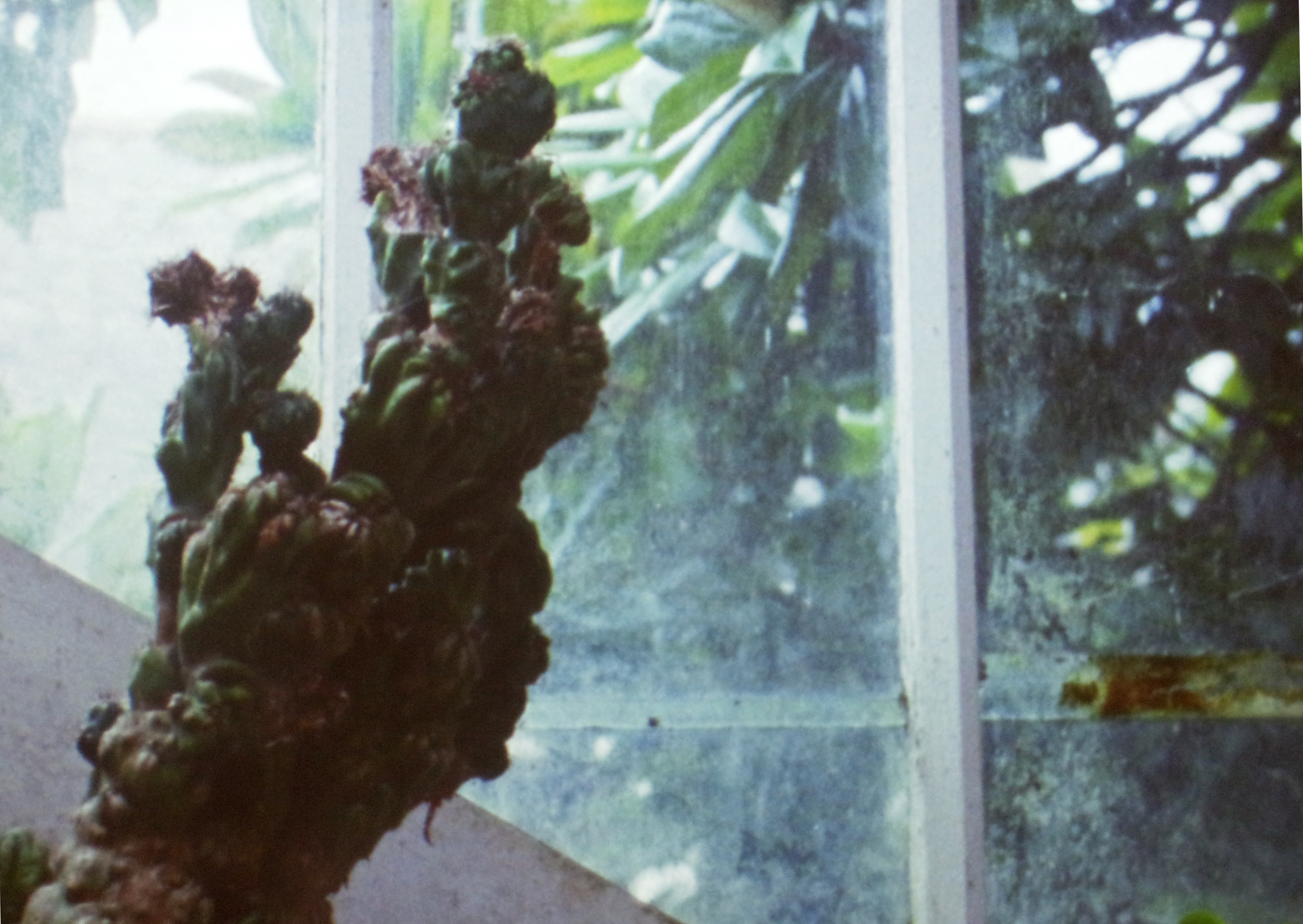
Charlotte Moth: still from ‘Filmic Sketches’, 2015
Most days art Critic Paul Carey-Kent spends hours on the train, traveling between his home in Southampton and his day job in London. Could he, we asked, jot down whatever came into his head?
